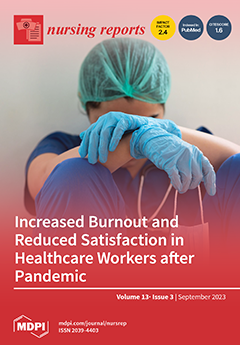Nursing-sensitive outcomes are those outcomes attributable to nursing care. To date three main reviews have summarized the evidence available regarding the nursing outcomes in onco-haematological care. Updating the existing reviews was the main intent of this study; specifically, the aim was to map the state of the art of the science in the field of oncology nursing-sensitive outcomes and to summarise outcomes and metrics documented as being influenced by nursing care. A scoping review was conducted in 2021. The MEDLINE, Cumulative Index to Nursing and Allied Health, Web of Science, and Scopus databases were examined. Qualitative and quantitative primary and secondary studies concerning patients with solid/haematological malignancies, cared for in any setting, published in English, and from any time were all included. Both inductive and deductive approaches were used to analyse the data extracted from the studies. Sixty studies have been included, mostly primary (
n = 57, 95.0%) with a quasi- or experimental approach (
n = 26, 55.3%), conducted among Europe (
n = 27, 45.0%), in hospitals and clinical wards (
n = 29, 48.3%), and including from 8 to 4615 patients. In the inductive analysis, there emerged 151 outcomes grouped into 38 categories, with the top category being ‘Satisfaction and perception of nursing care received’ (
n = 32, 21.2%). Outcome measurement systems included mainly self-report questionnaires (
n = 89, 66.9%). In the deductive analysis, according to the Oncology Nursing Society 2004 classification, the ‘Symptom control and management’ domain was the most investigated (
n = 44, 29.1%); however, the majority (
n = 50, 33.1%) of nursing-sensitive outcomes that emerged were not includible in the available framework. Continuing to map nursing outcomes may be useful for clinicians, managers, educators, and researchers in establishing the endpoints of their practice. The ample number of instruments and metrics that emerged suggests the need for more development of homogeneous assessment systems allowing comparison across health issues, settings, and countries.
Full article






